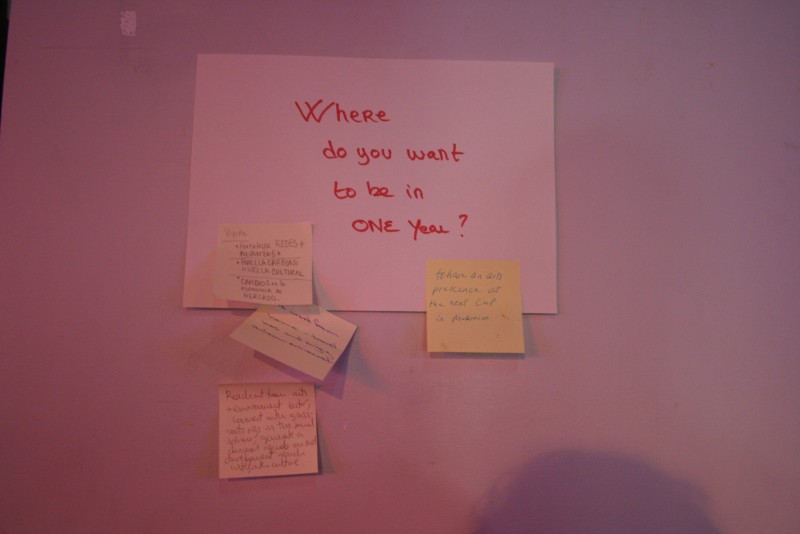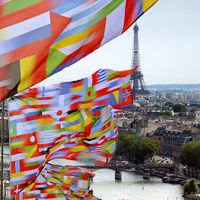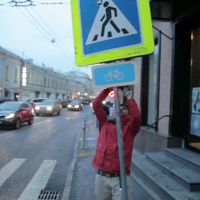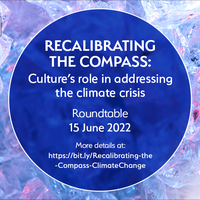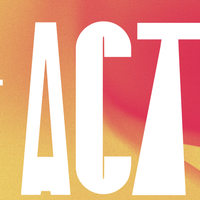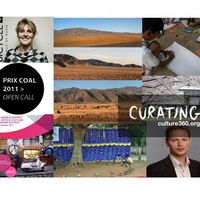How can the culture sector better embed sustainability in its activities?

On the occasion of the 21st Conference of the Parties (COP21) on climate change held in Paris in December, the ArtCOP21 (Paris Climate Art Festival) was organised during the same period in the trendy Gaité Lyrique, located in the heart of the French capital. One of the events of this programme was the ArtCOP21 Professional Workshop organised on December 3 - 4 December 2015 by COAL (Coalition for Art and Sustainable development), Julie’s Bicycle, the International Federation of Arts Councils and Cultural Agencies (IFACCA), and On the Move, with the financial support of several organisations including the Asia-Europe Foundation (ASEF).
The workshop, which gathered up to 150 professionals originating from more than 25 countries, discussed how the cultural sector can help turn society towards more durable ways of living and by which means the arts can adopt a “green attitude” and contribute to the rise of a new society, more respectful of the environment.
ASEF culture360 contributor Florent PETIT attended the event and reported on some of the main topics raised during the meeting.
DAY 1
The workshop started with a first session (The Policy context: Conditions for Change) gathering a panel of officials from National Arts Councils or Ministries of Denmark, England, France and South Africa; showing how these agencies are putting in motion policies that can provide answers to the environmental issue, and set and disseminate good practices in sustainability for the arts. As Soren Krogh from the Danish Art Agency mentioned, art is a precious tool for highlighting sustainability issues. The necessity for change is now taken into account by public institutions trying to initiate a visible impact on their nationwide policies.
The second panel (How to maximise partnerships to create effective change) showed some examples from city councils, cultural foundations and private structures from the United Kingdom, Colombia, France, Italy and Zimbabwe, developed to involve locals in programmes linked to sustainability issues. All the speakers stressed the necessity of paying attention to requests originating from civil societies and grassroots initiatives as some concrete action trying to bend cultural activities towards more sustainable goals were definitely fitting in a bottom-up approach.
The first afternoon was divided into three smaller working sessions. Workshop number 2 (Green Process vs Contents) introduced tangible actions made to embed sustainability into cultural programmes. One of the most interesting examples came from the International Festival of Lyrical Art of Aix-en-Provence (France). Like any other music festival, the management team clearly has in mind that it is impossible to reduce their carbon impact by cutting on travel, as most artists invited are coming from outside of town, and a significant number of them from abroad. Thus, the effort is focussed on set decoration, where technical teams are trying as much as possible to reuse elements coming from sets of past productions and to integrate , recycled materials in their new creations to the largest extent, adopting a circle attitude approach.
[caption id="attachment_57036" align="aligncenter" width="620"]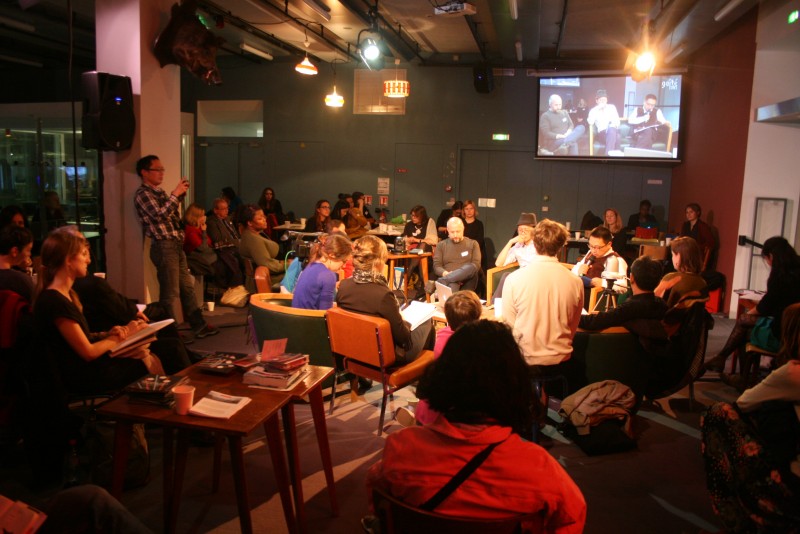 Workshop Act global, mobilize local[/caption]
Workshop Act global, mobilize local[/caption]
Workshop number 3 (Act local, mobilize global) introduced cases from China, Colombia, Indonesia, Russian Federation, United States and Zimbabwe on how cultural practitioners or activists can support local communities in their engagement to protect the environment and improve their living conditions. Projects presented ranged from interventions made within dense urban contexts to the mobilization of entire communities in remote rural areas. Russian artist Anton Polsky (see related interview on their work in the animated urban setting of Moscow) challenged the panel and the audience saying that these kind of gatherings were at times pointless as all participants were working in different geographical contexts, facing different issues (political, environmental, societal etc) and all coming with locally adapted solutions that could not be transferred from one context to the other. Moderator Sophia Lapiashvili (cultural manager from Georgia) insisted on the fact that whether you are conscious of it or not, you always bring back home some new ideas and perspectives after these kind of gatherings, and that these ideas could take a long period to mature and come out in your own context as valuable, appropriate solutions to improve the environment you are living and working in.
DAY 2
[caption id="attachment_57028" align="alignleft" width="317"] Interesting way to share ideas[/caption]
Interesting way to share ideas[/caption]
The first plenary session of the second day also dealt with ways to maximise partnerships for effective change. It offered the opportunity to browse specific good practices set in Austria, Brazil, Colombia, France and Taiwan showing how projects relying on a strong mobilization from civil society create effective change. Martha Bissmann of the EE Music project (developed both in Germany and Austria) for instance , is offered the opportunity to contemporary music venues to make an audit of their energy consumption and, thanks to a partnership with a private energy supplier, see how energy can be saved to help each venue shift to intelligent energy and use clean and renewable sources. The prestigious Kunsthaus of Graz, Austria, is the first to benefit from this programme.
Bamboo Curtain Studio founder Margaret Shiu explained how one of their projects gathered around one common goal (the preservation and regeneration of a river and mangrove shore located North of Taipei and threatened by sprawling urbanization) civil society, national and local institutions as well as private funders. The project succeeded in involving all layers of society and mobilizing both public and private structures for the general interest.
This session also stressed ethical issues of relations between cultural practitioners with private funders. The art sector should not ignore them as even big companies take the issue seriously and start to change: corporations have sometimes a high vision, higher that the public ones. Yet, there is a serious risk of seeing some initiatives turn into a mere public relations event or drawn in a wider communication strategy to “greenwash” the image of the funder and finally see the project considered as a mere foil. As funding structures are always looking for new things, it is sometimes hard to develop long-term relations; therefore artists must always make sure they are in control of their project, and not the sponsor.
Some other cases also evoked the fact that some fruitful collaborations were only relying on a close relation with one person. Once the person leaves to take on another position somewhere else, everything falls apart, and the stakeholder realises that the project didn’t actually fit with the vision the private partner had, but only relied on one specific relation, so there is a real need to never underestimate that risk.
The second session (Green tools) introduced several useful online tools, allowing institutions to keep an eye on the pollution they generate with travel, heating and keeping of facilities. One could mention Julie’s bicycle’s online carbon calculator (translated in eight Europeans languages) or Creative Carbon Scotland, to evaluate for instance the impact of travel during one year period. Ecoprod (in French) or Albert (in English) are tools related to the audio-visual sector that deserve to be mentioned. The audience recognised the efficiency of these tools, although they noted that the tools were fitted to a more western context, betraying the West’s obsession for charts and figures. More than that, several participants stressed the fact that the “efficiency” of a cultural project cannot only be determined by quantitative tools. Other evaluation methods, provided by sociology for instance, are of utmost importance to measure the impact of projects, stressing the necessity to set up locally tailored evaluation tools.
The very last session (Connected Actions!) looked at how the goals assigned to ensure a more sustainable environment could match the practices of cultural practitioners. All participants agreed that the art and cultural sector, as many others, had considered for quite a long time that global warming and the protection of the environment was a question to be put in the hands of scientists. That does not mean that the art world did not feel concerned, but it took a long time to make cultural practitioners, artists or activists aware that their activities and the way they envision and develop it is part of the solution at every level. In a post-capitalism world, as it may rise, you can not get satisfied when you see so many official structures trying to adjust their policies, always with a time lag, to new objectives regarding the preservation of our planet. All agreed that it is high time to provoke a dramatic shift now.
There is a high risk for the arts sector to get a highly sectorised vision of the issue, as most of the problems our societies are facing now are interconnected. Project leaders and their teams must realise their action for the climate, which still has a huge development potential, is not only about having a low carbon impact or contributing to the protection of nature, but also about contributing to human welfare and harmony in social relations. The art world needs to get out of its traditional limits, building cooperation with scientists for instance.
The ArtCOP21 workshop offered a precious opportunity to shake firmly the art world in order to make it leave its old models and its comfort zone, and, as with our whole society, to back the bid of climate change (yet keeping in mind that the cultural sector is undermined by huge budget cuts in public funding). A final common pledge, closing the ArtCOP21 event confirms the engagement of the cultural community to promote environmental sustainability.
The pledge will without a doubt integrate some of the ideas cast during ArtCOP21 professional workshop such as:
- The necessity to get a critical mass of informed organisations taking action;
- Multiply the number of proactive structures;
- Propose a road map that could be coupled with a legal framework;
- Address a much wider audience, and not only to culture stakeholders;
- Engage in long-term projects instead of one-shot actions, especially for programmes with local communities;
- Encourage the connection of the art sector with other groups
All the participants agreed that art can create a change towards a post-carbon and post-consumerism society. The culture world is going the wrong way if it thinks that climate change is only a technical problem with technical answers. Adaptation will not be enough, a transformative process is now needed.
- More on ArtCOP 21 Professional Workshop:
https://culture360.asef.org/asef-news/asef-support-artcop21-professional-workshop-paris-france/
https://culture360.asef.org/magazine/green-arts-culture-mobility-towards-an-international-equation/
Florent PETIT is a former project officer in the cultural unit of the French Embassy in Japan. He holds a Master’s degree in Art History from the Sorbonne University in Paris and in International Relations from the Institute of Political Studies of Lyon. Former lecturer of Chinese, Korean and Japanese art in the Ecole du Louvre in Paris, he has occupied several curatorial positions in museums in France (Asian Unit of the Musée du quai Branly, Paris) and Luxembourg (Mudam, Museum of contemporary art, Luxembourg City).
Similar content
posted on
12 Nov 2015
from - to
19 Nov 2023 - 21 Nov 2023

